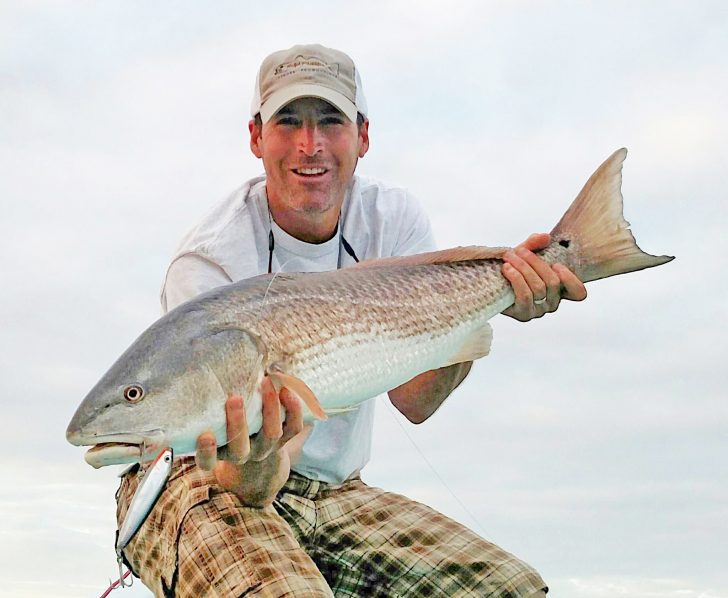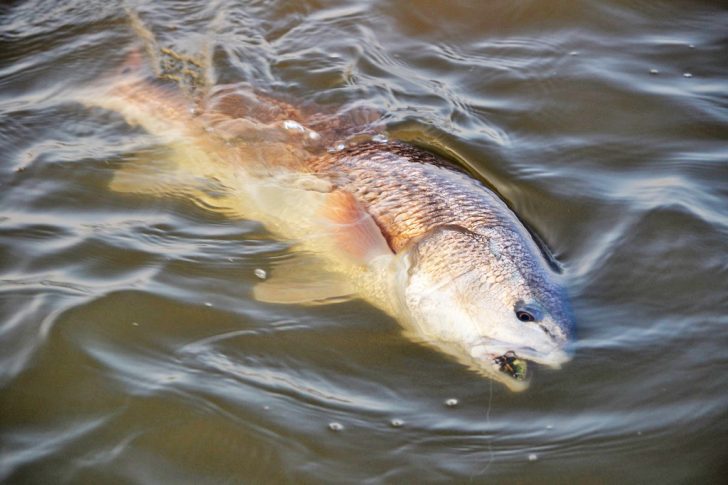A few years ago I owned a second home that was just 5 minutes from a boat landing south of Charleston.
If you’ve ever owned a second home you already know that for all the best times there are offsetting times of worry – about bills, upkeep, storms, water, sewer, and the list goes on.
While I don’t regret selling, I do really miss what were some of the best days of my life.
A typical day would be scripted like this. Get up around 5:30 am, make some coffee, and head to the landing (almost) always the first one there.
I’d take off in my 1966 Boston Whaler and navigate by the slight pre-dawn light. My destination was just down the creek and around a corner – a spot I noticed on Google maps years before that I decided to check out.
Turns out that would be the first spot I’d visit just about every trip for the next 7 years, it was that good. In fact I gave it a name: “Pumpkin Patch”.
What made it so good, and the things I learned while fishing it are the subject of this months article.
This spot was a bay on the end of a large flat full of oyster mounds and it was situated such that the outgoing tide would push water into it and trap bait naturally.
For example, around Labor Day, there was typically so much bait that when a seagull would fly low over the rafts of bait would scatter in a spray.
The bay would fill to about 3 ft deep at high tide and be dry at low.
It was strewn with random oyster clusters and not surprisingly, home to a large number of redfish.
Sometimes they would be schooled up in the back, sometimes working the dropoff, and sometimes bellying through the mud with their backs out of the water.
After spending countless mornings there, you start to learn their typical behaviors. The best way to target these fish was with a topwater plug.
There are very few things you can experience that are more of a rush than a bull redfish charging a plug on top in less than 2 feet of water.
Over the years I found that the type of plug made a big difference with these redfish.
They far preferred a Rapala Skitterwalk with its large profile and low pitch knock to a Heddon Spook Jr or other high pitch rattle.
If I made a random cast into the bay where I knew the fish were and worked it back at a moderate pace, it would almost never get hit.
However, working it very, very slowly, moving 6 inches at a time with a long pause between would improve my odds significantly.
But by far the most effective way to catch one was to hold the rod at the ready and…wait.
When targeting redfish on top, remember that they are built for feeding on the bottom
I would wait for a fish to make a topwater strike on a real baitfish and I found that if I landed that plug within a 10 ft radius within less than 10 seconds it would almost always get hammered.
My guess is that the fish thought he scattered the bait in the air and then it landed nearby, making for an easy meal. It worked for me…over and over again.
When targeting redfish on top, remember that they are built for feeding on the bottom.
They must raise their heads completely out of the water or sometimes roll on their sides or upside down to get the plug.
For this reason, they often miss the plug, blowing a hole in the water in the process.
It’s important to be very patient and wait for a pull on your plug before setting the hook or you’ll miss your fair share of strikes. When one misses, don’t reel in.
Instead, “sell” the wounded baitfish act with small twitches and pauses. More often than not they will come back to finish the deal.
With 3 or 4 redfish caught and released, I’d head back to the house around 9:30 to find the rest of the family just waking up and starting to make breakfast.
Lunch or dinner would often consist of at least some “creek-to-table” food, and after a day at the beach or sandbar there wasn’t a night where I wouldn’t fall asleep exhausted only to repeat again the next day.

__________________________________________________________________________
Over the years I had a few unusual things happen at the Pumpkin Patch, including a flounder on topwater, and a bull redfish that broke both treble hooks off a brand new Skitterwalk plug.
Never underestimate the power of the crushers in the back of a bull redfish mouth! From July through mid September, catching redfish on topwater is a fun and reliable method to focus on.
I highly suggest you try it. If you read this carefully, I’ve given a number of nuggets that will help you by shortening the learning curve.
Now if you excuse me, I’m going to check the real estate listings!
David Fladd
Partner, Eye Strike Fishing
dfladd@eyestrikefishing.com
eyestrikefishing.com
You may also enjoy reading
Finger Mullet ”A Catch All” Bait







